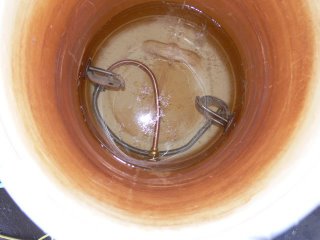Bugglz
Well-Known Member
- Joined
- 18/5/07
- Messages
- 146
- Reaction score
- 1
Ok i'm sure you guys have heard this all before, but this will only take a second, just need a yes or no answer 
I've been brewing from kits for a while now and want to get into all grain, I've done a heap of reading and think i know what i need. I do want to get straight into it and don't want to mess around with mini mashes and all that.
I'm planing on using a 44Lt esky as a mash tun with a manifold made of 1/2 inch copper piping and a 50Lt CUB keg as HLT/Boiler with a heating element fixed into it.
I'm planing on heating the water up in the HLT then adding this + the grain to the mash tun (just planing a single step infusion mash), once the enzymes have done there work, sparge it with sparge water from the HLT, draining it through the manifold into a fermenter and then emptying this into the HLT/boiler to be boiled.
Does this seem right too all you? also i know the wort will take ages to boil using the element but i already have it, do you think it will take too long to bother with it?
Any other sugestions?
Cheers :beer:
I've been brewing from kits for a while now and want to get into all grain, I've done a heap of reading and think i know what i need. I do want to get straight into it and don't want to mess around with mini mashes and all that.
I'm planing on using a 44Lt esky as a mash tun with a manifold made of 1/2 inch copper piping and a 50Lt CUB keg as HLT/Boiler with a heating element fixed into it.
I'm planing on heating the water up in the HLT then adding this + the grain to the mash tun (just planing a single step infusion mash), once the enzymes have done there work, sparge it with sparge water from the HLT, draining it through the manifold into a fermenter and then emptying this into the HLT/boiler to be boiled.
Does this seem right too all you? also i know the wort will take ages to boil using the element but i already have it, do you think it will take too long to bother with it?
Any other sugestions?
Cheers :beer:





